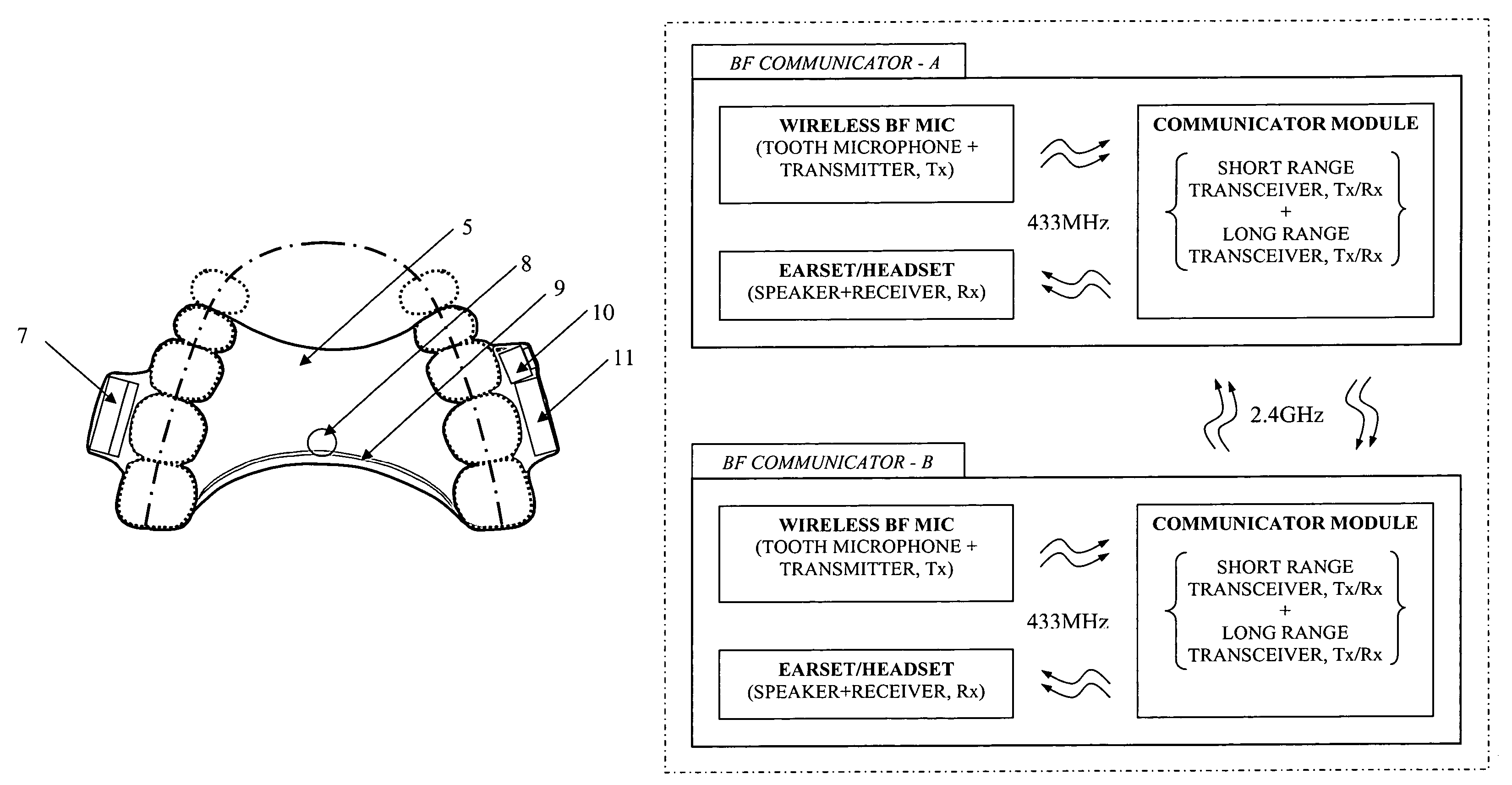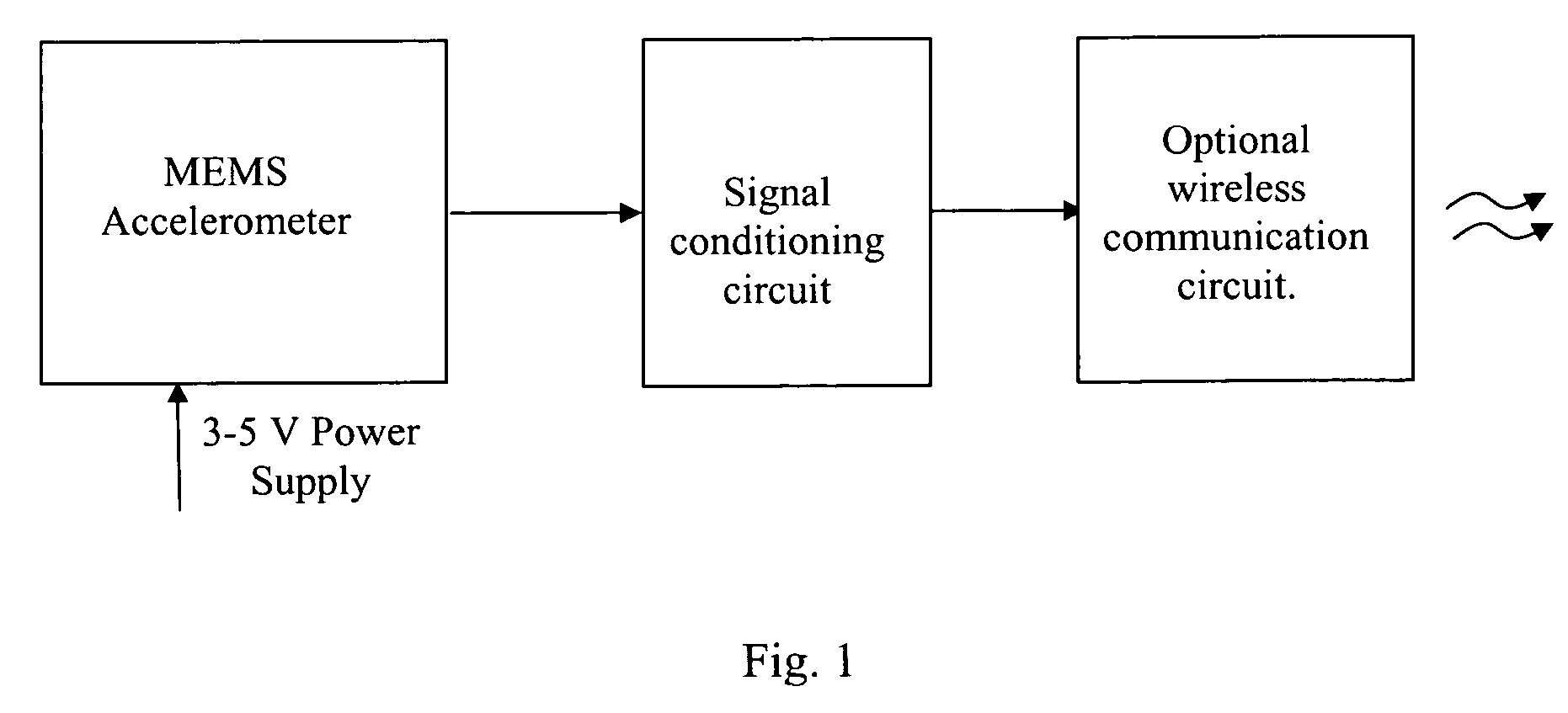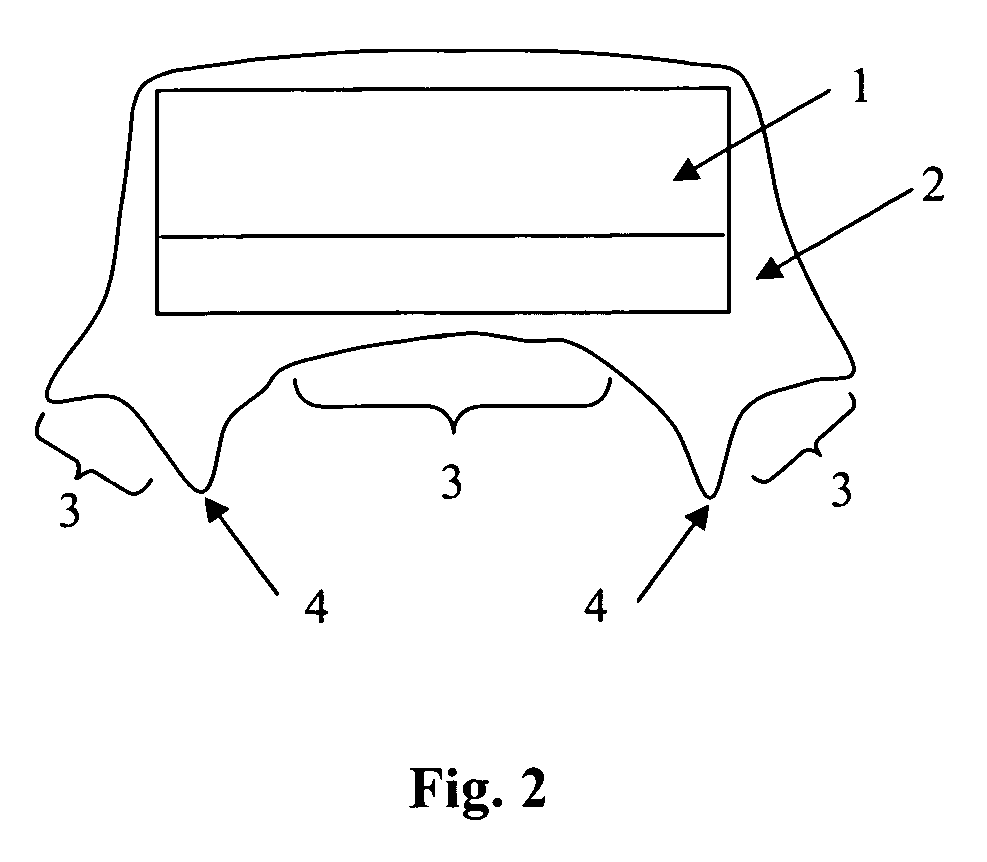Method and apparatus for tooth bone conduction microphone
a microphone and tooth bone technology, applied in the field of microphones, can solve the problems of deaf-aid sets, still not working all the time, and inability to accurately capture spoken words, and achieve the effect of filtering out the surrounding noise and high signal-to-noise ratio
- Summary
- Abstract
- Description
- Claims
- Application Information
AI Technical Summary
Benefits of technology
Problems solved by technology
Method used
Image
Examples
Embodiment Construction
[0022]The present invention, a high sensitivity tooth microphone, uses the above-referred teeth vibration as the source of sound. The high sensitivity tooth microphone can include a high sensitivity accelerometer integrated with a signal conditioning circuit, and a probe. Optionally for wireless communication, a switch can be added to the microphone. An RF transmitter, power source, and Wi-Fi, Bluetooth, or other wireless communication technology can be used to transmit out of the mouth to a nearby receiver.
[0023]A free end of the probe is held in contact with the teeth during the action of speaking. The high sensitivity tooth microphone converts the teeth vibration produced by speaking to a proportional electrical signal. This electrical signal can either be directly fed to a speaker or stored for later retrieval and use or fed to a processor for translation.
[0024]There are several features of the high sensitivity tooth microphone that makes it ideal for minimizing or even eliminat...
PUM
 Login to View More
Login to View More Abstract
Description
Claims
Application Information
 Login to View More
Login to View More - R&D
- Intellectual Property
- Life Sciences
- Materials
- Tech Scout
- Unparalleled Data Quality
- Higher Quality Content
- 60% Fewer Hallucinations
Browse by: Latest US Patents, China's latest patents, Technical Efficacy Thesaurus, Application Domain, Technology Topic, Popular Technical Reports.
© 2025 PatSnap. All rights reserved.Legal|Privacy policy|Modern Slavery Act Transparency Statement|Sitemap|About US| Contact US: help@patsnap.com



